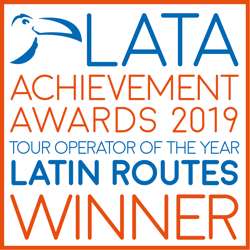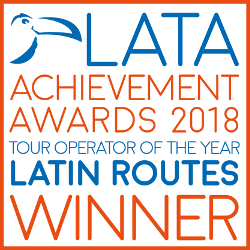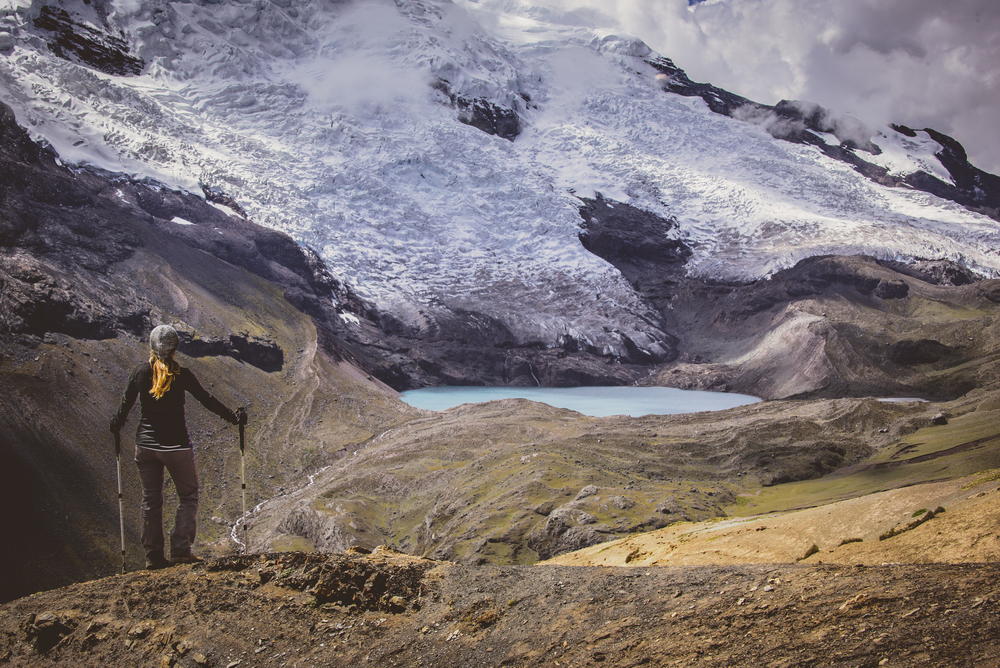GET IN TOUCH
Enquire About Machu Picchu Treks
BOOK AN APPOINTMENT
Please fill out your details below to book an appointment with a travel specialist:
CALL US
Mon to Sat: 9am-5:30pm
0208 546 6222
Send An Enquiry
Enquire About Machu Picchu Treks
When Do You Want To Go?
So, you are thinking about going trekking in Peru? Which route is right for you?
The Incas built almost 50,000 km of roads across the Andes. Stretching from the extreme points of their empire through what is today Colombia, Ecuador, Peru, Chile, Bolivia and Argentina. This ancient marvel of engineering known as the Qhapaq Ñan still exists, the bulk of it, some 25,000 km, is in Peru. As the Inca’s didn’t have horses or the wheel, these ancient paths were traversed entirely on foot, with llamas being used as beasts of burden.
These incredible trails pass from the snow-capped peaks of the Andes to the coast, running through mystical cloud forests, verdant rainforests, fertile valleys and arid deserts.
The Inca Trail
.jpg)
The most famous of these treks is the Inca Trail. It is widely regarded as one of the best treks in the world and if it isn’t on your bucket list, it probably should be. The journey takes in a jaw-dropping amount of scenery, with alpine tundra, lush cloud forest, sub-tropical jungle and plenty of Inca ruins along the way. The highest point on the trek, the so-called dead woman’s pass for many can be a big physical challenge, so it is worth making sure you are in good shape before attempting the trail.
It starts at kilometre 82 (a point on the train line measured from Cusco) and winds through the mountains to Machu Picchu. The highlight of the trip is visiting the Inca’s citadel on the last day. You will awake early and enter the complex through the Sun Gate, watching the sun rise above the ruins before the main gates open to other visitors.
The route is traditionally 4 days and 3 nights (though it is possible to do a shorter two-day trek). You will spend the nights camping in tents along the route. Due to the popularity of the trek, the number of permits per day is capped at 500, with 200 of those being reserved for trekkers (the bulk are for their porters and guides). The permits are released in January and sell out very quickly, especially for high season, so it is essential to book well in advance. You are also likely to be sharing the experience with lots of other trekkers all keen to enjoy one of the most spectacular adventures of the world. The trail is closed in February for cleaning and maintenance.
In the guide below, we hope to answer all your questions from “What is the Inca Trail”, “How fit do you need to be to do the Inca trail?”, “Where is the Inca Trail located?” When is the best time to go for the Inca Trail? “How long is the Inca Trail?” “What to pack for the Inca Trail?” “How hard is the Inca trail?”
To book your dream Inca Trail trek complete the enquiry form or call one of our Travel Specialists on 020 8546 6222.
Trek Facts
|
Trek difficulty: |
Challenging. Remote mountain trails with few settlements and no roads. |
|
Trek duration: |
4 days |
|
Remoteness: |
Remote |
|
Maximum altitude: |
4,200 m while crossing the Dead Woman’s Pass |
|
Accommodation type: |
Camping |
|
Best season: |
April – October |
|
Start/end locations: |
Cusco – Kilometre 82 / Machu Picchu – Cusco |
|
Permits required: |
Yes |
|
Physical fitness: |
Good level of fitness and proper acclimatisation required |
.jpg)
The Salkantay Trek
With 24,960 kilometres of trails outside of the Inca Trail to explore there are countless opportunities for some truly spectacular experiences in Peru without the crowds. The Salkantay Trek may not be as well-known as the Inca Trail, but for those in the know, it offers incredible highlights that you won't find on the more famous route. As the Inca Trail becomes more popular and books up further and further in advance, The Salkantay Trek provides the closest alternative to the Inca trail and is an experience that few are likely to regret.
The route takes in a total of 15 different ecosystems as it winds its ways through the stunning Andean scenery. Like the Inca Trail, you will visit Machu Picchu, although you won’t arrive at Machu Picchu through the Sun Gate. Instead, the trek finishes at Santa Teresa near the town of Aguas Calientes, the nearest settlement and primary access point to Machu Picchu.
The key benefit of the Salkantay trek comes in not sharing the trail with the same volume of hikers and tourists as you find on the more famous Inca Trail. You will also get to enjoy the spectacular views of Machu Picchu from the neighbouring mountain Llactapata, a sight that is not possible to see on any other trek.
The typical itinerary is slightly longer than the Inca Trail taking a total of 5 days and 4 nights, although there is a shorter 4 day, 3 night version as well a more luxurious 7-day trek which involves all the highlights of the route, but instead of camping, you will stay in well-appointed mountain lodges enjoying the fluffy pillows, hot tubs, gastronomy and quality accommodation of a 4 or 5 star hotel.
The Salkantay takes in a greater variety of landscapes and ecosystems than the Inca Trail giving you more time to reflect and enjoy your space in this sensational part of the world.
In the guide below, we hope to answer all your questions from “What is the Salkantay Trek” “How fit do you need to be to do the Salkantay Trek?”, “Where is the Salkantay Trek located?” When is the best time to go for the Salkantay Trek? “How long is the Salkantay Trek?” “What to pack for the Salkantay Trek?” “How hard is the Salkantay Trek?”
|
Trek difficulty: |
Hard. The trail sees few settlements |
|
Trek duration: |
5 days |
|
Remoteness: |
Remote |
|
Maximum altitude: |
4,600 m while crossing the Salkantay Pass |
|
Accommodation type: |
Camping or Mountain Lodges |
|
Best season: |
April – October |
|
Start/end locations: |
Cusco – Mollepata – Santa Teresa / Aguas Calientes – Cusco |
|
Permits required: |
no |
|
Physical fitness: |
Good level of fitness and proper acclimatization required |
The Lares Trek
The Lares route takes in some of the most remote scenery of the Andes. You are unlikely to see other tourists out on the trail here at all. It is the perfect way to escape the crowds and see some of the truly spectacular scenery and remote lakes of the Sacred Valley. The route passes through remote towns and villages, where the focus will be on authentic encounters with the local people, who still live their traditional lives away from the bustle of the more touristy parts of Peru. The trek is best understood as a cultural experience and will give you the opportunity to really immerse yourself in the way of life of this part of the Andes.
Like the Salkantay trek, there is the option to stay in mountain lodges, where you will be pampered and looked after between legs of the journey.
The Lares routes finishes in the town of Ollantaytambo, from there you will get the train to Machu Picchu (which is itself one of the best train journeys in the world). The route is the least travelled of the 3 main treks in Peru.
|
Trek difficulty: |
Moderate |
|
Trek duration: |
4 days |
|
Remoteness: |
Remote |
|
Maximum altitude: |
4,450 m while crossing the Ipsaycocha Pass |
|
Accommodation type: |
Camping or Mountain Lodges |
|
Best season: |
April – October |
|
Start/end locations:
|
Cusco – Lares / Ollantaytambo – Aguas Calientes – Cusco |
|
Permits required: |
no |
|
Physical fitness: |
Good level of fitness and proper acclimatization required |
What to Pack on your Machu Picchu Trek
- 40+ litre hiking rucksack to carry your gear.
- Broken-in hiking boots or walking shoes (trainers are not suitable).
- Full rain gear (rain jacket, waterproof trousers) or a poncho.
- Hiking trousers and shorts.
- Fast-wicking and quick-to-dry top and bottom base layers.
- Comfortable shoes/flip-flops.
- Cold-weather jacket.
- Gloves (light fabric or wind stopper).
- Long-sleeve fleece/sweater.
- Woolen hat.
- Baseball cap or sun hat.
- Buff or Bandana.
- Sunglasses.
- Comfortable walking socks.
- Sunscreen.
- Insect repellant.
- Mountain casual wear for evenings.
- Photo/video cameras and chargers.
- Refillable water bottle.
Send An Enquiry
Enquire About Machu Picchu Treks
When Do You Want To Go?

From your first booking with us, you’ll become a member of My Routes Rewards and begin collecting points for every holiday you book!
ABOUT US
Our Truly Individual Holidays allow you to choose the destinations, inclusions & budget
Winner of 'Tour Operator of the Year - Small' at the 2021 Travel Industry Awards by TTG
Winner of 'Best Tour Operator' at the 2019 & 2018 L.A.T.A. Achievement Awards
All of our holidays are ATOL protected (11104), for your complete peace of mind





Why book with Latin Routes?
TRULY INDIVIDUAL
- Tailormake every part of your Latin America holiday including the duration, destinations, inclusions and budget
- From charming guesthouses to 5* luxury, we have a style of accommodation to suit you
- Our Travel Specialists will help you to create your perfect holiday to Latin America
TRUSTED
- We continually receive excellent reviews from our clients and have a fantastic score on the independent review website, Trustpilot.
- All of our holidays are ATOL protected (11104), for your complete peace of mind
- An assured member of the Association of Independent Tour Operators (AITO)


